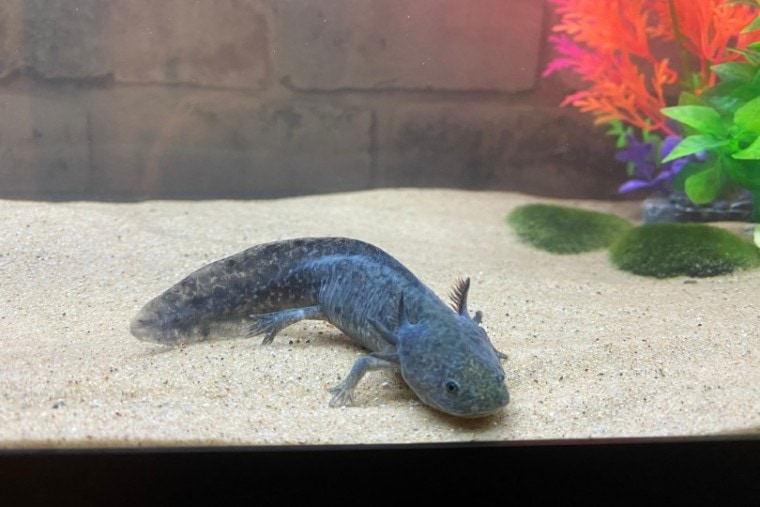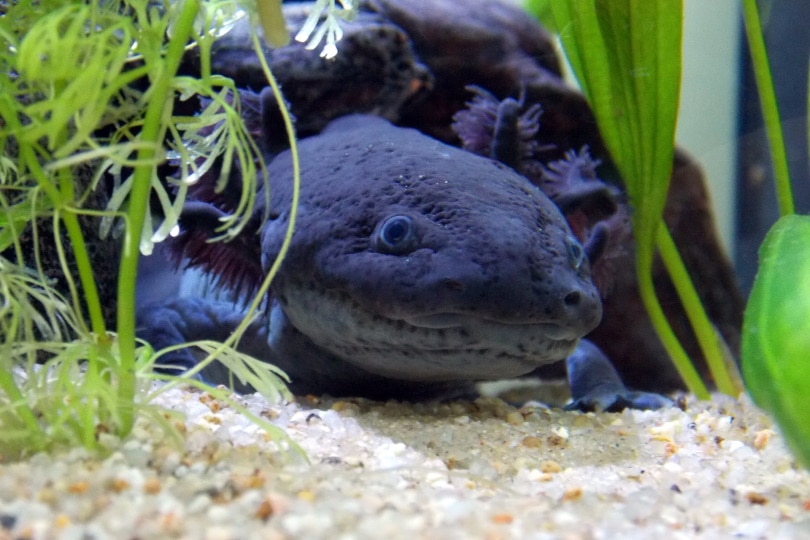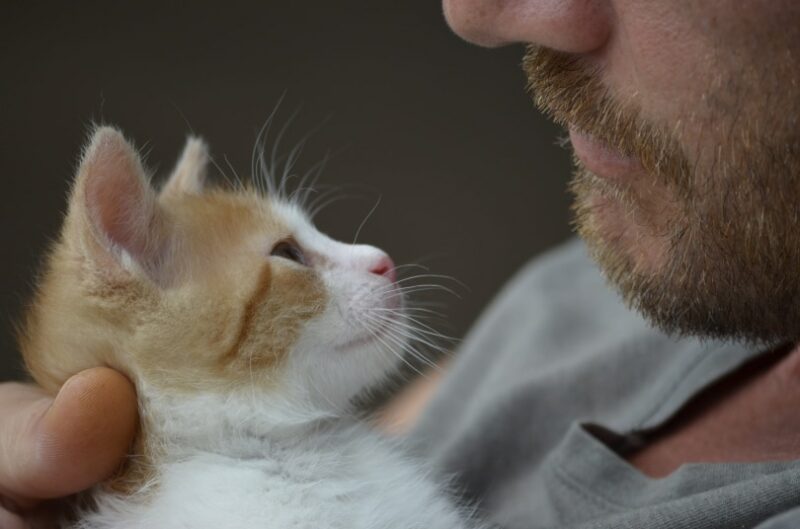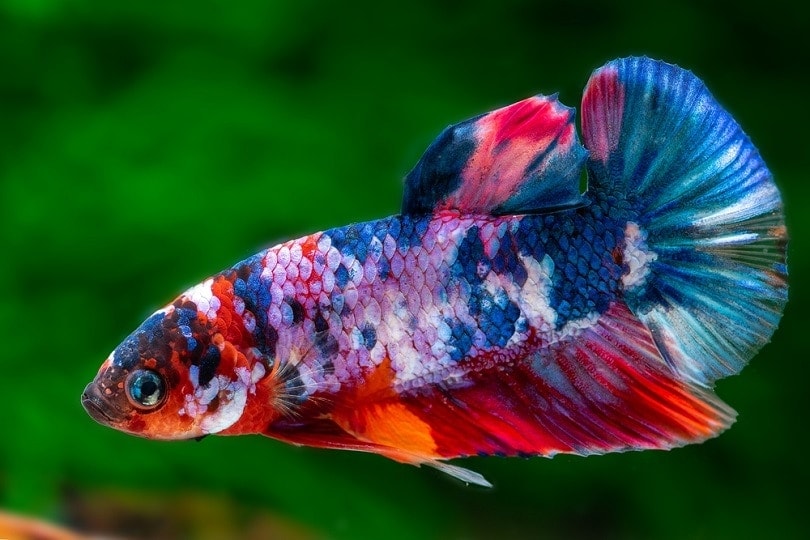
The Blue Axolotl is not an accurate name for this unique salamander, since they are not blue at all. They are actually dark gray or black, which could look bluish in certain lights. They are most commonly called Black Melanoids.
The Axolotl (pronounced AX-oh-lot-ul) comes from Lake Xochimilco and Lake Calcho in Southern Mexico City. Its name translates to “water dog” from the Aztec’s Nahuatl language, and it’s connected to the Aztec god, Xolotl.
If you’re interested in learning more about the Axolotl and are considering adding one to your aquarium, then please read on!
Quick Facts About the Blue Axolotl
| Species Name: | Ambystoma mexicanum |
| Family: | Ambystomatidae (salamanders) |
| Color Form: | Black or Dark Gray |
| Care Level: | Difficult–Expert |
| Lifespan: | 10–15 years |
| Adult Size: | 10–12 inches |
| Diet: | Worms, pellets |
| Minimum Tank Size: | 20-gallon (needs to be long) |
| Temperature: | 60º–64° F is ideal |
Do Blue Axolotls Make Good Pets?

Axolotls do make excellent pets as they are fascinating creatures. They are curious and inquisitive amphibians that enjoy moving about and exploring their habitat. They don’t mind being watched by their owners and might even watch you back.
They shouldn’t be handled unless absolutely necessary as their skin is quite delicate, but watching them move around the aquarium can be entertaining.
They are not recommended for beginners unless you have experience in looking after a tropical freshwater tank.
Appearance
This is what the Black Melanoid Axolotl is all about—its unique appearance! These Axolotls are dark gray or black without any other flecks or spots of color. They have frilly, feathery gills that fan out on either side of their necks, and they look like they are always smiling.
Another standout feature of these salamanders is that they retain their limbs, which has given them their nickname, Mexican Walking Fish, although they remain in the water their entire lives and don’t really walk.
Another truly interesting facet of the Axolotl is that they can regrow limbs! If they lose their gills, eyes, or limbs, they regenerate and grow back. Amazing little creatures!
There are four other popular color variations of the Axolotl other than the Black Melanoid. There are more than what we have listed here, but they are exceptionally rare.
See Also: Axanthic Axolotl: Info & Care Guide for Beginners (with Pictures)
How to Take Care of a Blue Axolotl

Habitat, Tank Conditions & Setup
Tank
A 10-gallon tank is suitable for a young Axolotl, but you’ll need a 20-gallon for an adult. A longer tank is preferable over a deeper tank, as they like to spend some time floating near the surface or exploring along the floor. They are pretty good at getting out of aquariums, so be sure to have some kind of cover or lid.
The tank will need good water filtration, and water flow needs to be gentle. The water quality needs to be maintained to the correct standards, or your Axolotl will become stressed, and its gills might become injured.
The right water quality is essential, and it should be brackish, which is a combination of salt and fresh water. You’ll need to change the water by at least 20% once a week and use a siphon to remove waste from the substrate. But never completely drain and clean the water as this will destroy the delicate balance of the water content.
Lighting
They actually need low levels of light, and the tank must be kept out of direct sunlight, particularly because you can’t control the temperature.
Temperature
The optimal temperature for the Black Melanoid Axolotl is between 60º–64° F. Lower temperatures will make the Axolotl sluggish, and temperatures higher than 75° F can lead to stress and, eventually, death.
Substrate
You can opt for no substrate or fine sand. You need to avoid small rocks or gravel as the Axolotl is likely to eat them, which will cause an obstruction. Avoid any rocks smaller than 3 cm. You can add large rocks for places to hide as well as fake or real plants that have a soft texture. Axolotls have sensitive skin that can tear easily.
More on Water
It’s imperative that the water conditions are kept at an optimal level in order to keep your Axolotl healthy and stress-free. You should be familiar with maintaining a freshwater aquarium, which can be started off with a pre-mixed formula from a pet store.
You’ll want to invest in a slow filter. These amphibians live in lakes in the wild, so slow-moving and brackish water is necessary. If you don’t invest in a filter, you can expect to change 20% of the water every day.
| Tank Recommendations | |
| Tank Type: | 20-gallon tank |
| Lighting: | No direct light. Low light levels |
| Heating: | Keep at 60º to 64° F |
| Water: | Filtered, gentle flow |
| Best Substrate: | Fine sand, large rocks, or bare floor |
Feeding Your Blue Axolotl

You can feed your Black Melanoid both live food as well as soft pellets. However, live food has the potential of injuring your Axolotl.
Young Axolotls should be fed once daily and adults once every two or three days.
Appropriate food includes bloodworms, nightcrawlers, red wigglers, and soft, moist sinking salmon pellets. Be sure to only buy frozen worms for your amphibian and don’t use any meant for fishing as they might have parasites.
Axolotls tend to eat anything smaller than 3 cm, which can also include other Axolotls.
| Diet Summary | |
| Fruits | 0% of diet |
| Insects | 0% of diet |
| Meat | 100% of diet – variety of worms or soft pellets |
| Supplements Required | No |
Keeping Your Blue Axolotl Healthy
Common Health Issues
Make sure everything in your Axolotl’s environment is safe and won’t tear its delicate skin. They are also susceptible to bacterial infections and parasites, so be sure to keep the tank clean.
They are vulnerable to fungus forming on their gills. If your pet is shaking its head a fair bit, this could be from stress or another disease.
Obstructions in their gastrointestinal tract are common since they enjoy eating everything. So again, be sure to keep smaller inedible items out of the tank.
Lifespan
Axolotls are surprisingly long-lived! If you take good care of your Axolotl by providing it with an appropriate diet and keeping its environment/water clean, your pet can live for up to 15 years.
They do take a fair amount of maintenance and an experienced owner, so they aren’t the best pet for a beginner.
Breeding
It is recommended to wait until your Axolotls are at least 18 months old, and while the breeding season is typically from March until June, pet Axolotls can breed any time if the water temperature is suitable.
The male and female fall into a dance of sorts, which is followed by the male depositing packets of sperm around the tank. The female then takes in the sperm where fertilization occurs internally, and she will lay eggs throughout the aquarium after a few hours or days.
She might lay as many as 1,000 eggs, but once this is done, it’s best to separate them.

Should Blue Axolotls Be Housed With Tankmates?
The short answer is no. If the other aquatic fish or amphibians are smaller, the Axolotl will just eat them. But there’s also the risk that other fish will nibble on your Axolotl’s feather gills. Not only will this injure your Black Melanoid, but it will also create a stressful environment. Additionally, the water temperature isn’t terribly hospitable to other species.
The best tankmate for your adult Axolotl is another adult Axolotl, but you’ll need to commit to keeping them both well-fed, or cannibalism might occur.
How Much Do Blue Axolotls Cost?
Depending on where you buy it from, the Black Melanoid can range from $40 to $120. If you’re ordering online, this price will be higher due to shipping charges.
Care Guide Summary
Final Thoughts
Axolotls have legs and lungs but don’t go out onto land, they look like they’re perpetually smiling, and they grow back lost body parts—now that’s a fascinating creature! The Blue Axolotl, or the Black Melanoid, is an amazing amphibian that would make a fantastic new pet for an experienced aquatic hobbyist.
Featured Image Credit: Lilly Kreen, Shutterstock








